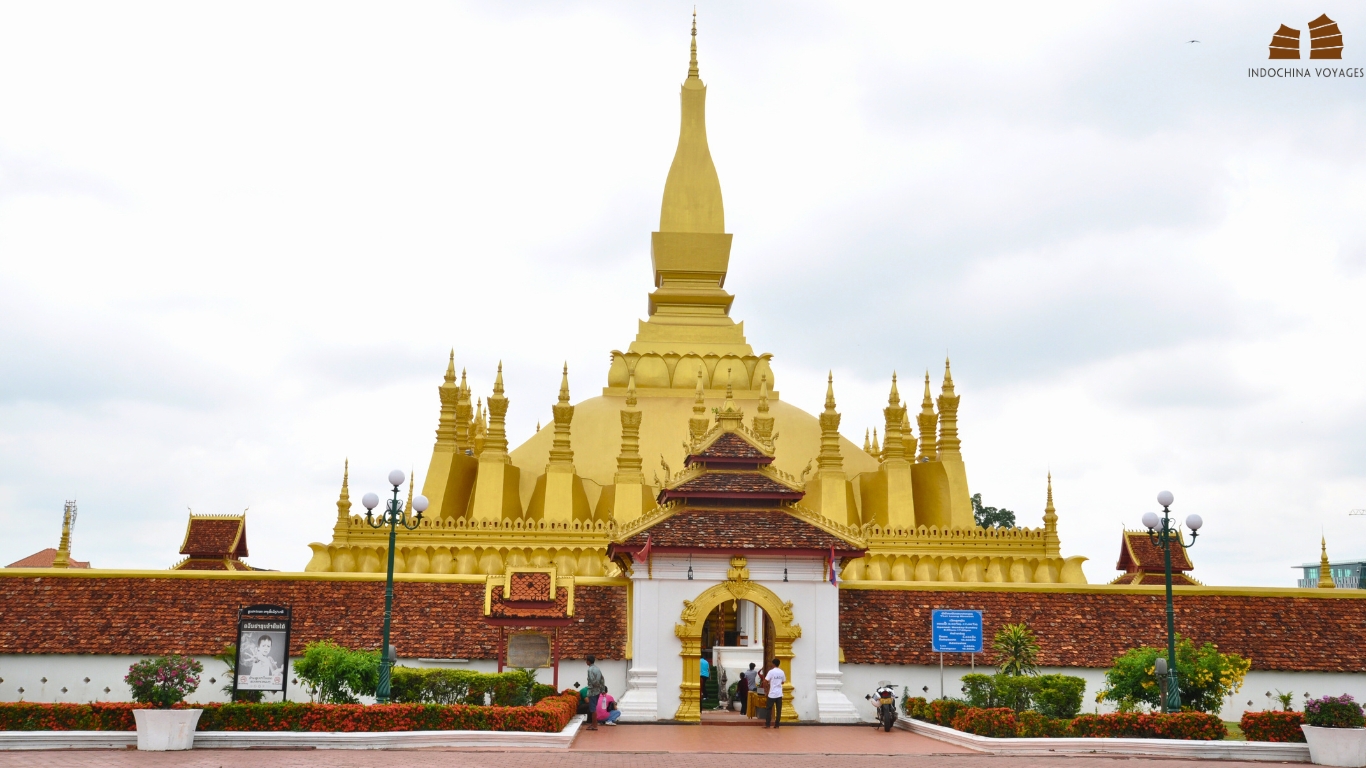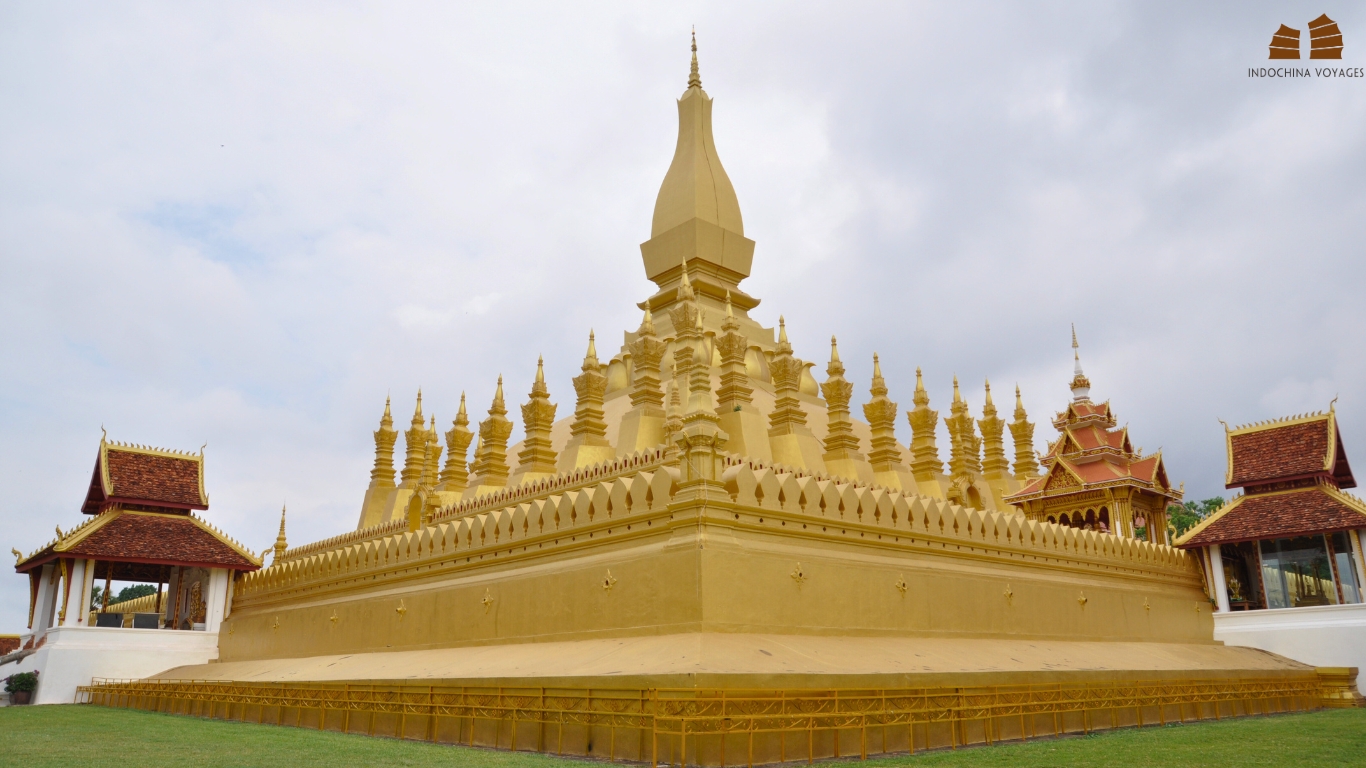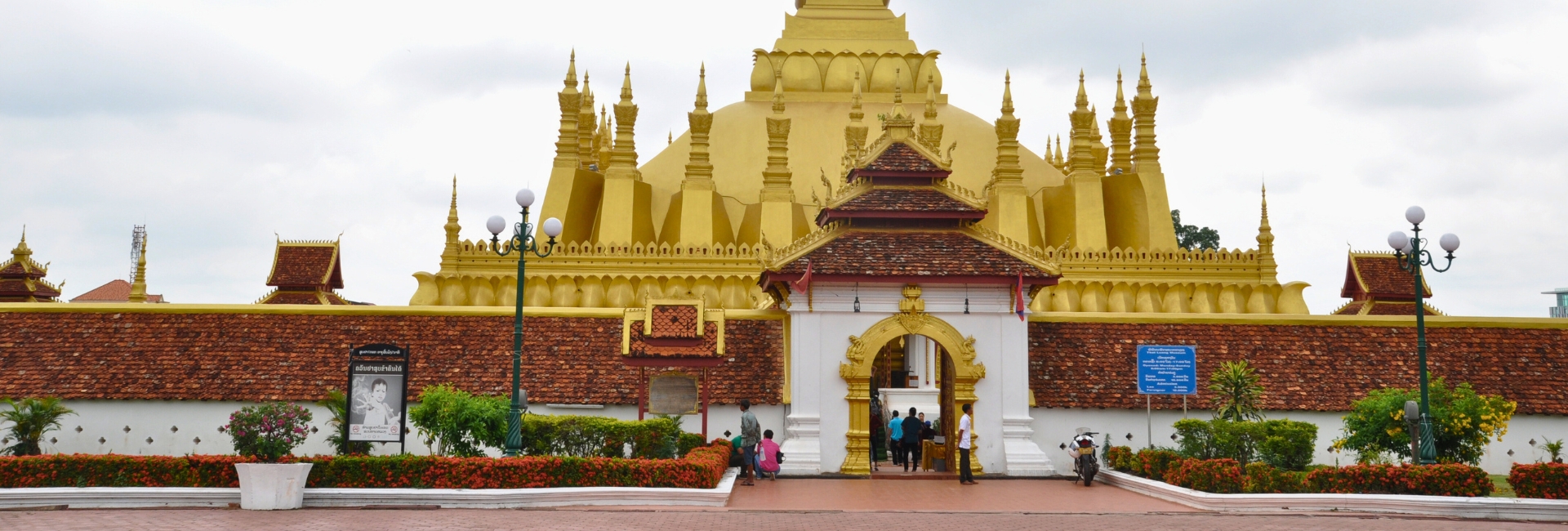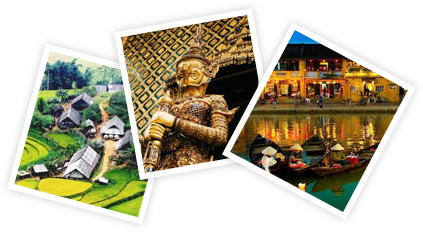Standing right in the center of Vientiane, Pha That Luang Stupa deserves to be one of the Must-see Attractions for the Vientiane Trip. This awe-inspiring structure, also known as the Great Sacred Stupa, stands tall as a symbol of national pride and cultural heritage.
What do you know about Pha That Luang Stupa?
- As its location is about 4km from the heart of Vientiane at the end of That Luang Road, the name Pha That Luang is mostly well-known to travelers until now
- Pha That Luang means the Great Sacred Stupa, which symbolizes national pride, and is a religious monument of immense cultural significance.
- Pha That Luang is situated in the center of a vast complex, attracting visitors not only for its spectacular gold pyramid shape surrounded by 30 small Stupas but also for the gracious design inside.
- The majestic golden stupa is the main highlight of the complex, reaching a height of 148 feet (45 meters)
- Entrance Price: 5,000 Lao Kip (approximately $0.55 USD)
- Open Time: 8:00 AM to 12:00 AM and 1:00 PM to 5:00 PM

The History
Dating back to the 3rd century, Pha That Luang Stupa has a fascinating history deeply rooted in Buddhist traditions. The original stupa was believed to have been built by the Indian Emperor Ashoka, who sent missionaries to spread Buddhism across Southeast Asia.
Over the centuries, the stupa underwent several renovations and expansions. The most significant reconstruction took place in the 16th century under the rule of King Setthathirat. As the legend goes, King Setthathirat decided to move his capital from Luang Prabang to Vientiane marking the construction of Pha That Luang in 1566
Legend has it that the stupa enshrines a relic of the Buddha, making it an important pilgrimage site for Buddhist devotees. Its historical significance and association with Lao identity have resulted in Pha That Luang being revered as the national symbol of Laos.
What to see?
Pha That Luang Complex
The Pha That Luang Complex is a captivating ensemble of structures surrounding the main stupa. The complex spans an area of approximately 2.2 hectares and features various temples, pavilions, and statues, all exuding a serene and spiritual ambiance.
As you explore the complex, you’ll come across several temples and prayer halls, each displaying unique architectural styles and intricate details. Wat That Luang Neua and Wat That Luang Tai are two notable temples within the complex that offer visitors an insight into the religious practices and cultural heritage of Laos.
The complex also features peaceful gardens, providing a tranquil setting for contemplation and relaxation. Take a moment to admire the beautifully landscaped grounds, adorned with symbolic statues and lush greenery, creating a serene atmosphere that invites visitors to experience a sense of spiritual tranquility.

Pha That Luang Stupa
Some more steps into Pha That Luang is the presence of amazing hand-painted artworks, which will put your mind in awesome feelings. Scattered around the temple’s well-cared grounds, there are also numerous statues of Buddha and deities. They are all life-sized statues that are well crafted and dressed in bright saffron robes. Here are some key features and elements of the architectural style of Pha That Luang:
- The Stupa Structure: At the heart of Pha That Luang is the stupa, a large hemispherical dome-shaped structure, which is the main focal point of the complex. The stupa is adorned with layers of gold leaf, giving it a resplendent and radiant appearance. Its distinctive shape represents the cosmic world in Buddhist cosmology.
- The Three Levels: Pha That Luang is composed of three levels, each representing a different aspect of Buddhist teachings. The base level symbolizes the earthly realm, the middle level represents the realm of existence, and the top level signifies the spiritual realm.
- The Central Tower: Rising from the top level of the stupa is the central tower, also known as the harmonica. It is adorned with decorative motifs, including lotus petals, mythical creatures, and intricate patterns, showcasing the exquisite craftsmanship of Laotian artisans.
- The Finial: Crowning the central tower is the final, known as the chatta or dok so far. This spire-like structure, usually made of gold or silver, is embellished with intricate details and represents the pinnacle of spiritual enlightenment.
- The Surrounding Galleries: Encircling the stupa are open-air galleries, featuring intricate colonnades adorned with ornate carvings and sculptures. These galleries provide sheltered walkways and add a sense of grandeur and architectural beauty to the complex.
- The Entrance Gates: Pha That Luang is accessed through grand entrance gates, known as sim, which are elaborately decorated with intricate carvings and colorful motifs. These gates serve as a transition point from the outside world into the sacred space of the complex.
- The Decorative Elements: Throughout the complex, you will find various decorative elements, including statues, murals, and intricate mosaics. These artistic embellishments depict scenes from Buddhist mythology, important historical events, and the lives of revered religious figures.

FAQs
- Is photography allowed within the complex?
Yes, photography is generally allowed within the Pha That Luang complex. However, it is advisable to be respectful and avoid photographing individuals without their permission, especially during religious ceremonies or private moments of worship. - Is there a specific time of year when it is best to visit Pha That Luang?
Pha That Luang can be visited year-round, but the best time to visit Laos in general is during the dry season, which typically runs from November to April. During this period, the weather is more pleasant, with lower chances of rainfall. - What is the significance of Pha That Luang Stupa?
Pha That Luang holds great cultural and religious significance in Laos. It is considered a national symbol and an important pilgrimage site for Buddhists. It is believed to enshrine a relic of the Buddha, making it a revered and sacred place. - Are there any specific rules or etiquette to follow while visiting Pha That Luang?
Visitors are expected to behave respectfully while visiting Pha That Luang. It is customary to remove your shoes before entering temple buildings or specific areas. Additionally, it is important to dress modestly, covering your shoulders and knees as a sign of respect for the religious site. - Are there any nearby attractions worth visiting while in Vientiane?
Vientiane offers several other fascinating attractions. Some notable ones include Patuxai (Victory Monument), Wat Sisaket, Wat Phra Kaew, and the COPE Visitor Centre, which provides insights into the history and impact of unexploded ordnance in Laos.
A visit to Pha That Luang is not just a journey, but a transformative experience that will deepen your understanding and appreciation of Laos’ rich tapestry of traditions. Get ready to be enchanted, inspired, and forever changed by the indelible spirit of Pha That Luang Stupa. It’s an experience that will leave a lasting impression and provide a deeper appreciation for the cultural treasures of Laos.
The Indochina Voyages Team
Maybe you’ll love our Tours to Laos:








